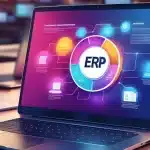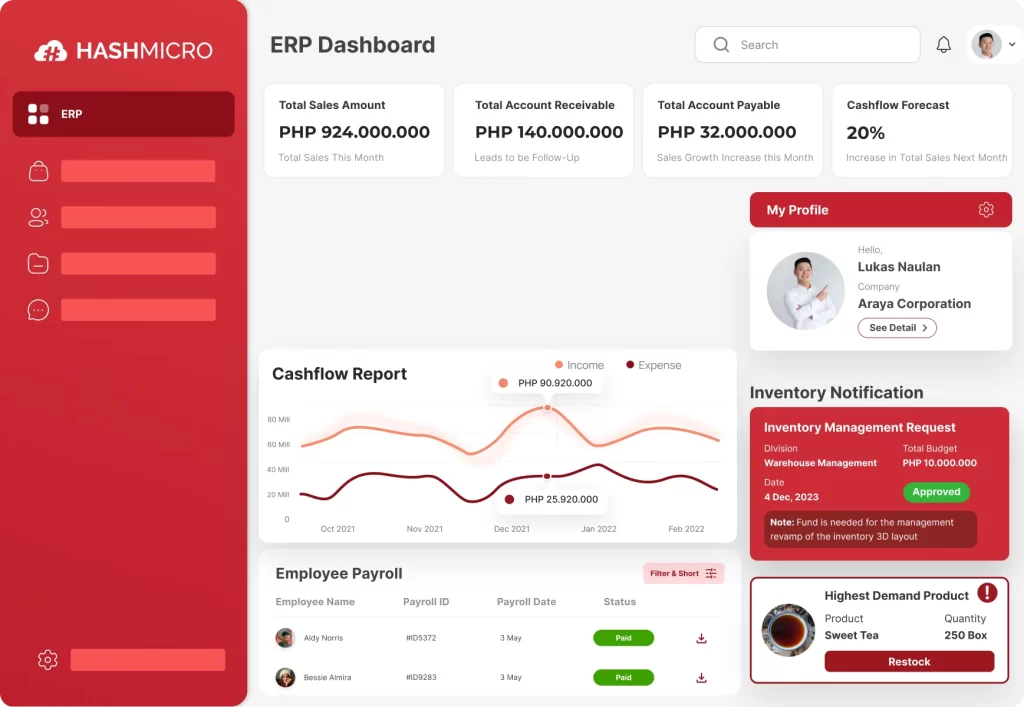As the business landscape becomes increasingly competitive, companies must optimize their operations for improved efficiency and growth. One of the key drivers of business efficiency is well-implemented ERP software that aligns with your specific needs.
The ERP system selection process can be overwhelming, given the multitude of options available in the market. However, by adopting a strategic approach, you can make an informed decision that will pave the way for long-term business success.
This article will highlight the key factors you should consider when selecting an ERP system. From defining your selection criteria to crafting a targeted Request for Proposal (RFP), we aim to equip you with the knowledge and insights necessary to make an informed decision.
Table of Contents
Introduction to ERP Selection
When it comes to selecting the right ERP system for your business in the Philippines, it’s essential to make a strategic choice. By implementing an ERP system that aligns with your specific needs and goals, you can streamline operations, improve decision-making processes, and optimize resource utilization.
The ERP selection process involves several key steps that help you evaluate different software options and choose the one that best fits your requirements.
It starts with identifying your business’s specific needs and understanding the functionalities and features you require to support your business processes.
Next, you need to define your selection criteria based on the unique aspects of your business and the Philippine market. Consider factors such as scalability, ease of use, integration capabilities, and industry-specific functionalities.
Once your criteria are established, crafting a targeted Request for Proposal (RFP) is crucial. This document outlines your specific needs, enabling potential ERP vendors to provide relevant information and solutions.
Undertaking an initial ERP system selection involves researching and shortlisting ERP solutions that meet your criteria. Utilize ERP software reviews and buyer’s guides tailored to the Philippine market to gather insights and narrow down your options.
After narrowing down your choices, a detailed comparison of the shortlisted ERP systems is necessary. This stage involves evaluating factors such as business alignment, vendor capabilities, and system functionalities.
System demonstrations provided by vendors should also be considered, as they allow you to assess the software’s usability and compatibility with your business.
Finally, consider factors like business growth potential, integration capabilities, total cost of ownership, and return on investment. Ensure alignment with your business goals before deciding.
Defining Your ERP Selection Criteria
When selecting an ERP system for your business in the Philippines, it is crucial to define your ERP selection criteria based on your unique requirements.
Here are some tips to help you define your ERP selection criteria:
- Understand business requirements: Evaluate processes such as inventory management, financials, sales, procurement, and customer relationship management to identify where an ERP system can add value.
- Identify key features: Make a list of essential features like inventory tracking, real-time reporting, integration capabilities, multi-currency support, and customizable dashboards based on your business needs.
- Evaluate scalability: Ensure the ERP system can grow with your business without requiring significant upgrades or customizations.
- Consider integration: Look for seamless integration with existing software applications to streamline processes and avoid data duplication.
- Assess vendor expertise: Choose vendors with experience in the Philippines, an understanding of local regulations, tax requirements, and industry-specific challenges.
- Evaluate total cost: Consider upfront costs, licensing fees, implementation, training, ongoing support, and system upgrades for a comprehensive view of total ownership costs.
- Focus on user adoption: Prioritize user-friendly interfaces, intuitive navigation, and robust training resources to ensure smooth employee adoption of the ERP system.
Defining your ERP selection criteria based on your business requirements, key features, and functionalities will help you find an ERP system that meets your specific needs.
Crafting a Targeted Request for Proposal (RFP)
When it comes to selecting the right ERP system for your business in the Philippines, a well-crafted Request for Proposal (RFP) plays a crucial role. An ERP RFP helps you communicate your specific needs to vendors and guides the selection process.
Creating a focused RFP is paramount to ensuring accurate vendor responses that align with your business requirements. To craft an effective RFP, consider the following guidelines:
- Define your specific needs: Before drafting an RFP, clearly identify and outline your specific requirements for an ERP system. Consider factors such as your business processes, industry compliance, integration needs, scalability, and budget constraints.
- Create a well-structured document: Organize your RFP in a way that is easy to navigate and understand for potential vendors. Include sections that cover your business background, project objectives, functional and technical requirements, implementation timeline, and desired pricing model.
- Include relevant evaluation criteria: Specify the criteria through which you will evaluate vendor proposals. Highlight essential aspects such as system functionality, vendor expertise, ongoing support, training resources, and compatibility with your existing IT infrastructure.
- Request detailed information: Be specific in your request for information from vendors. Ask for detailed descriptions of their ERP solution, including features, functionalities, customization options, and integration capabilities.
- Clarify vendor response requirements: Clearly define the format and structure you expect from vendors when they respond to your RFP. This will help ensure consistent and easily comparable responses that address your specific needs.
- Set a reasonable timeline: Provide vendors with a clear timeline to submit their proposals. Allow ample time for vendors to understand your requirements, prepare their responses, and address any clarifications that may arise.
By following these guidelines, you can create an effective ERP RFP that will help you identify vendors whose offerings align with your specific needs. Crafting a targeted RFP sets the stage for a successful ERP system selection process, ensuring that you are equipped with accurate vendor responses to make an informed decision.
If you are interested in learning more about HashMicro, one of the best ERP system provider, click on the banner below to view the software’s pricing scheme.

Undertaking an Initial ERP System Selection
When selecting an ERP system for your business in the Philippines, it is crucial to undertake a thorough and strategic initial selection. This process involves exploring various methods to find ERP solutions that align with your defined criteria and business requirements.
Consider utilizing ERP software reviews and buyer’s guides that are specifically tailored to the Philippine market. This provides valuable insights into the features, functionalities, and performance of different ERP systems available.
It is essential to establish clear and comprehensive selection criteria. Take into account your specific business needs, such as industry requirements, scalability, integration capabilities, and user-friendly interfaces.
The initial ERP system selection process should also include evaluating the reputation and expertise of ERP vendors in the Philippines. Research their track record, customer reviews, and portfolio of successful implementations.
By undertaking an initial and thorough ERP system selection, you can set the foundation for a successful ERP implementation that drives business growth and efficiency.
Detailed Comparison and Selection of ERP Solutions
It is important to conduct a detailed comparison when selecting the right ERP solution for your business in the Philippines. This process evaluates multiple factors to ensure that the chosen ERP system aligns with your business needs and long-term objectives.
First, consider how well each ERP solution is tailored to meet the unique requirements of your business. Look for ERP vendors that have experience in serving businesses similar to yours, as this indicates their understanding of your industry-specific challenges and needs.
Next, evaluate their track record, customer testimonials, and references to gauge their expertise and reliability. Consider the quality and availability of their customer support and training resources, as these factors can significantly impact your ERP implementation and user adoption.
Examine the features and modules offered by each ERP solution. Look for specific functionalities that address your pain points and offer opportunities for process optimization and automation.
Next, system demonstrations provide an opportunity to see the ERP solution in action and evaluate its usability, user interface, and customizability. During these demonstrations, actively involve key stakeholders from different departments to ensure that all relevant perspectives are considered in the decision-making process.
This detailed approach ensures that the chosen ERP system will streamline your operations, improve business efficiency, and pave the way for long-term growth and success.
Making the Final ERP System Selection
To ensure a successful outcome, it is essential to evaluate the total cost of ownership and the potential return on investment (ROI).
One of the primary factors to consider is how well the ERP system supports your business growth goals. Look for a solution that can scale and adapt as your business expands. This flexibility will enable you to meet future challenges and seize new opportunities.
Integration is another critical factor that should not be overlooked. Ensure that the ERP system you select can seamlessly integrate with existing systems and processes within your business.
When evaluating the total cost of ownership, it’s essential to consider not only the initial upfront costs but also the long-term expenses. Look beyond the price tag and assess factors such as implementation, maintenance, and ongoing support costs.
Additionally, determine the value that the ERP system brings to your business and calculate the expected financial benefits. Consider how the solution can improve productivity, reduce manual tasks, and drive overall efficiency.
Key Factors in ERP System Selection
When selecting an ERP system for your business in the Philippines, evaluating these factors will help you choose an ERP system that aligns with your needs and goals.
- Business Process Compatibility: Ensure that the system can seamlessly integrate with your workflows and support your unique business requirements.
- Vendor Expertise: Evaluate the vendor’s expertise in implementing ERP systems, particularly within your industry. Consider their track record and customer reviews to gauge their reliability and ability.
- Technology Fit: Consider factors such as compatibility with your hardware and software, data integration capabilities, and cloud-based options. Choosing a system that seamlessly integrates with your current technology stack will ensure smooth implementation and reduce disruptions.
- Scalability: Evaluate the system’s ability to handle increasing data volumes, additional users, and expanding operations. Scalability is crucial to support your long-term business goals and avoid the need for frequent system changes.
- Cost Analysis and ROI: Consider not only the initial implementation costs but also ongoing maintenance, updates, and support expenses. Assess the potential return on investment (ROI) the system can deliver in terms of increased productivity, cost savings, and business growth.
- User Adoption: Choose an ERP system that is intuitive and user-friendly, minimizing the learning curve for your employees. Adequate training resources and support will increase user adoption and maximize the system’s benefits.
- Training Resources: Ensure that the ERP vendor provides comprehensive training resources to equip your employees with the necessary skills to effectively use the system. Evaluate the availability of user manuals, online tutorials, and training programs.
By carefully evaluating these key factors in ERP system selection, you can choose a system that not only fulfills your immediate requirements but also supports your long-term business growth and success.
Conclusion
Selecting the right ERP system for your business in the Philippines requires a strategic approach to ensure a successful implementation and long-term benefits. By following this strategic approach to ERP system selection, you can position your business for increased efficiency and growth in the dynamic Philippines market.
One of the best ERP system vendor is HashMicro, with comprehensive functionalities that is customizable to meet your business’ needs and goals, this software can help streamline operations and fully drive business growth.
Adopt the solution to have efficient business operations and try the free demo now!

























